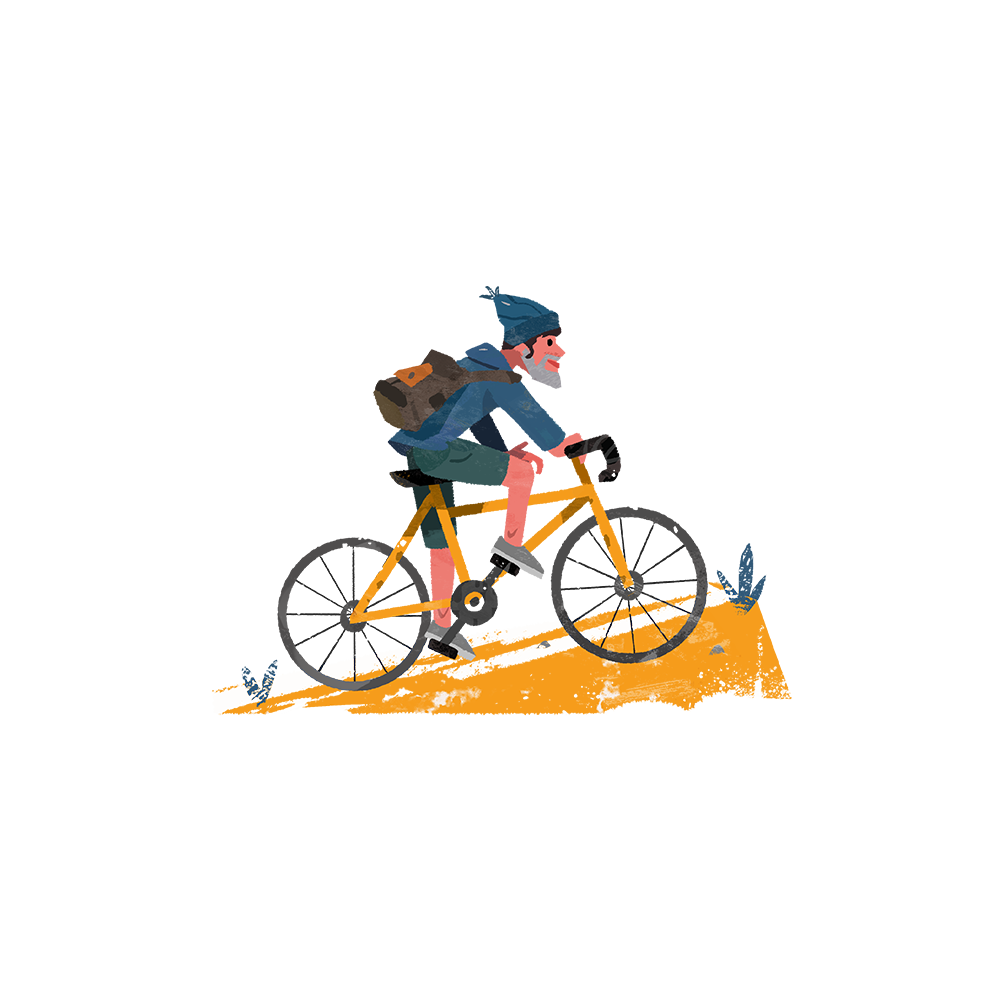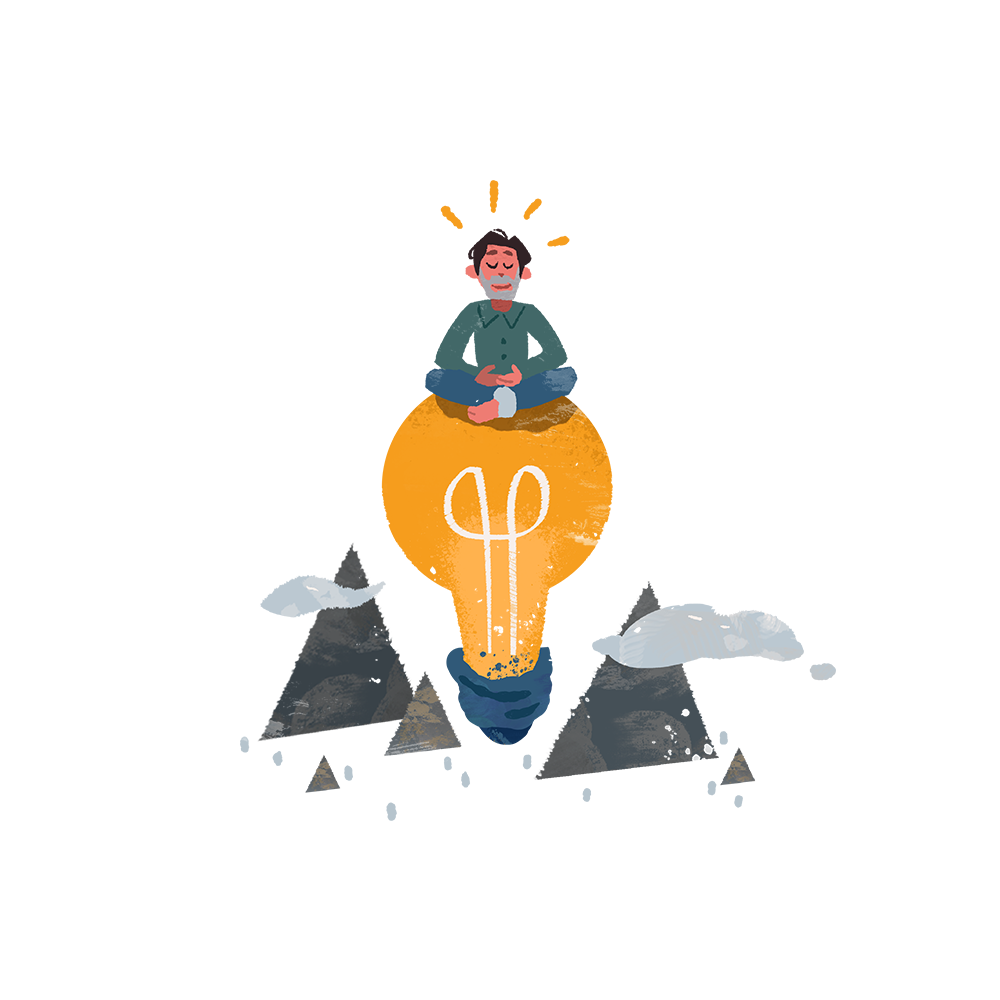Ray DeLaPena, UX
An IoT designer with a focus on Workshops and Team Collaboration
Hello Ray, could you please introduce yourself?
Sure. My name is Ray DeLaPena. I've been in design and technology for a little over 20 something years. It was 1996 when I started and have been loving it ever since. Currently, I am a Principal UX designer at AWS Internet of Things (IOT). Previously, I was a Principal Designer at IBM in the consulting space, particularly focused on blockchain. When I first started in the technology field, Networking was a big thing — connecting computers so they could communicate with each other. During that time, I knew I wanted to bring a human centered approach to finding ways to improve people's lives with these new technologies.
In the past 2 years, a couple of things have been particularly challenging and interesting for me to focus on first. Most of my career before Amazon, I was a design consultant. This is only the second time I've done “in-house” design. I am making a shift from being a consultant to shaping products and taking more of a long-term view. I enjoy the challenge of the complexity of AWS. It's an immense space and in particular IoT which is a new domain to me. In my career, I've been particularly focused on technologies. The techniques, methods, and processes are what got me into this industry. When I was studying in college, I studied philosophy in college, but I studied the philosophy of technology to understand the WHY that underlies the services.
To explain more about technology, for example, the wheel is a technology, writing is a technology, it's any sort of service to complete a task. And I've been particularly interested in the design space in combining a human centered design thinking approach to new technologies. Prior to my IoT design job, I was in blockchain and IBM iX - an exponential technology space. There are a great amount of technologies that are exponentially growing or having an exponential impact in AI/ML, Robotics, IoT and Quantum computing.
How would you define a Principal Designer role?
It's about a focus on the craft, and to use the Amazonian lingo, Raising the bar on the way our teams operate and keep hiring great talents to the company. The principal role’s responsibilities are helping the design and product team to grow. I am assessing the distribution of member’s skills, process and methods, and focusing on elevating the strengths across the team. I am continuously focused on the designer’s craft and doing something a little bit distinct from the manager's responsibilities which are contributing and growing people. I'm aware that getting either promoted to or hired as a principal is a significant achievement. Once you achieve that principal title, that's an acknowledgement and an explicit acknowledgement that you're part of the leadership of the organization's design discipline. It is a responsibility I take seriously. I am working on my narrative and helping my leadership to understand what the design team and I can contribute to the organization. When you decide to grow through an IC path, you need to help work partners to see you as a valuable member.
“Once you achieve that principal title, that’s an acknowledgement and an explicit acknowledgement that you’re part of the leadership of the organization’s design discipline.”
Was there a moment where things clicked for you that you decided to stay on the IC track?
Well, as we chatted earlier, I came into AWS as a principal designer, but I had to make a similar decision at IBM iX before going on the principal path. The choice between being a manager and being an IC to me, had a lot to do with what I'm interested in and what drew me to design in the first place. It was sort of having that impact for customers and users. I always wanted to be as close as possible to people who are using the services.
This is the core reason that kept me closer to the IC path. The responsibilities and mission of the manager versus the IC both are important contributors to that ultimate experience for customers, but the manager role is also explicitly responsible for the growth of the team and the career progression and the administration of the members of their team.
“The choice between being a manager and being an IC to me, had a lot to do with what I’m interested in and what drew me to design in the first place. It was sort of having that impact for customers and users. I always wanted to be as close as possible to people who are using the services.”
And as a principal designer, I feel a great responsibility to contribute to the growth of the people in my team and people outside of my team. Compared to the manager role that is responsible for the employee's experience, the principal role drew me to be able to contribute and focus my efforts primarily on delivering the end results of our product's experience for users.
I'm curious about designers committed to staying on the IC track beyond the senior level. What are the most important skills they should learn outside of hard craft skills?
I would say understanding the different disciplines and taking product design through information gathering, synthesis, and conversations. It’s a matter of learning the craft of the disciplines that you are interested in the most. The IC career trajectory is different from organization to organization. Among Product, Technology and Design, how an IC member manifests each domain in any individual organization or product team is a little bit different. So first and foremost, I say, understand the disciplines that you need to collaborate with so that you can help them understand ours (designers). Both engineering and product teams, there are varying levels of understanding of the design breadth beyond just the interfaces, wireframes and mockups. It’s our job to help them to understand what we do.
Within the design discipline, I think understanding research is another big broad area. The flip side of the coin is to find those adjacent areas of interest that excite you. Because it's equally important that you have a passion and an interest in what you're doing. So if I say to you, Kevin, you need to learn engineering to be a great principal designer, and you have no interest in that then, you know, it's NOT going to make for a successful, enjoyable career. You have to find the areas that are interesting to you and keep practicing it, just like Craftsmanship in Japan.
I find that once you move into the principal role, there's a lot of ambiguity in your responsibilities.
I took the same trade-off approach when I was at IBM and here at AWS. I spend around 80% of my time talking with stakeholders, peers and customers, and 20% of time is spent analyzing data and deciding what my priorities are.
When you're a senior designer up to that point, it's a lot clearer what your deliverables and responsibilities are. It is associated with a particular product or project for a long period of time. In the principal design role, it's a matter of assessing the needs of your organization and supporting the team to grow. At the beginning, I tried to understand the gaps for our customers across the entire portfolio. So a little bit of everything from what's going on within the individual products and services to understand what the holistic experience is.. And then, you can analyze what is the state of the team, process, method, relationship with the other disciplines. Based on analysis of the organization needs, I can define what my areas of focus and priority.
“I say, understand the disciplines that you need to collaborate with so that you can help them understand ours (designers). Both engineering and product teams, there are varying levels of understanding of the design breadth beyond just the interfaces, wireframes and mockups. It’s our job to help them to understand what we do.”
You talk about raising the bar quite often. Could you share your day-to-day focus, especially around raising the bar for your current focus?
As I mentioned before, I looked across what was going on in our organization and found some areas of opportunity where I thought we could improve, in particular collaboration between design and product. I could always find places to improve the process of product design strategy. There are 20+ people in my organization so it's a matter of staying aware of and having visibility into all the different interactions that are happening across all portfolios. I am working with product managers and finding opportunities to add value as design.
And then for those zooming in, you know, conducting a customer workshop or helping facilitate a prioritization or brainstorming session. Sometimes, I am trying to understand how product managers make their decisions and then communicate with them where design can contribute. So a lot of my time is scanning the landscape for those opportunities and then working to inject myself and other designers on the project or the design managers on my teams into those conversations and processes.
Do you consider yourself an introvert or extrovert?
I would say in between 🙂 In my work history, I've got an extensive amount of experience as a consultant, but also as a facilitator of workshops and other sort of collaborative sessions. At work, I'm an extrovert - I'm in the front of the room. You know, I am making sure everybody is conversing, contributing, and engaged. But off work, if you think about what defines you, whether you're an introvert or extrovert, it's where you recharge your energy. During weekends, I prefer to go for a walk, a hike to create my own space and time. At this time, I am an introvert.
“My responsibility as a principal is to make the best possible outcome for our customers. Ultimately, making a great product is what both a manager and ICs are aiming for. So it’s not that these are mutually exclusive, but as the principal IC, our primary goal all day is shipping the best work for customers.”
What are you excited about this year?
I'm excited about seeing people again in 2022. I really am. A personal story, I'm moving to the West Coast to be closer to my team. I'm moving to Portland, Oregon a few days from now. So I'm really excited to be in the same time zone as my team. We're all going to be able to come out of our shells and interact with each other face to face. But I'm also equally interested in the results of the past couple of years we've spent working remotely and I am wondering how that's going to carry over? You know, if we can get the best of both worlds, where we are also able to work together in a room. We can be effective and have the flexibility to spend more time with our families without the commute. Work in the way that we want to work! I'm really looking forward to seeing how these work styles play out when we're not in crisis mode assuming we're going to move out of crisis mode eventually.




